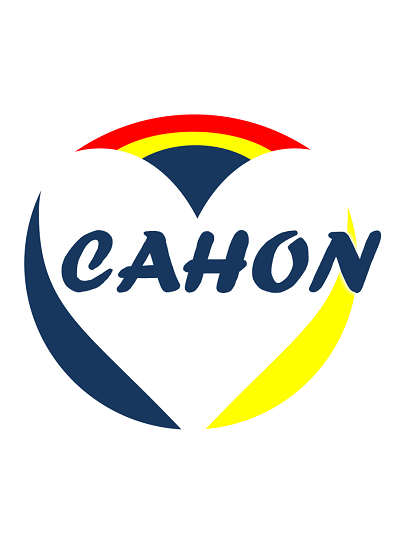Quizartinib: a potent and selective FLT3 inhibitor for the treatment of patients with FLT3-ITD–positive AML
IF 29.5
1区 医学
Q1 HEMATOLOGY
引用次数: 0
Abstract
Mutations in FMS-related receptor tyrosine kinase 3 (FLT3) are among the most common alterations in acute myeloid leukemia (AML), present in ≈30% of newly diagnosed AML cases. Internal tandem duplications (ITD) in FLT3 (FLT3-ITD) occur in ≈25% of newly diagnosed AML cases and are associated with unfavorable outcomes. Quizartinib (formerly AC220) is a novel, second-generation, highly potent, and selective type II FLT3 inhibitor. Quizartinib is approved in Japan as monotherapy for the treatment of adult patients with FLT3-ITD–positive relapsed/refractory (R/R) AML. Quizartinib is also approved in the United States, Japan, Europe, and United Kingdom in combination with chemotherapy during induction and consolidation, and as maintenance monotherapy (but, in the United States, not after allogeneic hematopoietic cell transplantation [allo-HCT]), for the treatment of adult patients with newly diagnosed FLT3-ITD–positive AML. In this review, we summarize preclinical studies that established quizartinib as a potent and selective type II FLT3 inhibitor as well as early and pivotal phase 3 clinical studies (QuANTUM-R and QuANTUM-First) that led to the approvals of quizartinib. We also summarize mechanisms of resistance to quizartinib along with its safety profile. Furthermore, we review the ongoing post hoc analyses of the QuANTUM-First data elucidating the impact of allo-HCT, the presence of measurable residual disease, and number and length of ITD on the clinical outcomes of quizartinib. We also describe the impact of quizartinib on patient-reported outcomes. Finally, we highlight some of the ongoing studies that test quizartinib in patients with FLT3-ITD–positive AML, patients with FLT3-ITD–negative AML, in both the first-line and R/R settings, in patients fit or unfit for intensive chemotherapy, including studies for quizartinib-based combination with other compounds such as decitabine and venetoclax. Future research should aim to further optimize the clinical value of quizartinib and explore its use in additional clinical settings, which could be achieved by testing quizartinib with other drugs, better characterization of the mechanisms of resistance, identification of the role of quizartinib as a maintenance therapy after allo-HCT, and investigating quizartinib in patients with FLT3-ITD–negative AML.奎沙替尼:治疗 FLT3-ITD 阳性急性髓细胞白血病患者的强效选择性 FLT3 抑制剂
FMS相关受体酪氨酸激酶3(FLT3)的突变是急性髓性白血病(AML)中最常见的变异之一,在新诊断的AML病例中占30%。FLT3内部串联重复(ITD)(FLT3-ITD)发生在≈25%的新诊断急性髓细胞白血病病例中,与不利的预后有关。Quizartinib(原名AC220)是一种新型、第二代、高效、选择性II型FLT3抑制剂。日本已批准 Quizartinib 作为单药治疗 FLT3-ITD 阳性复发/难治性(R/R)急性髓细胞白血病成年患者。美国、日本、欧洲和英国也批准奎沙替尼在诱导和巩固治疗期间与化疗联用,并作为维持性单药疗法(但在美国,不能在异基因造血细胞移植[allo-HCT]后使用),用于治疗新确诊的FLT3-ITD阳性急性髓细胞性白血病成年患者。在本综述中,我们总结了确定奎沙替尼是一种强效、选择性 II 型 FLT3 抑制剂的临床前研究,以及导致奎沙替尼获批的早期和关键性 3 期临床研究(QuANTUM-R 和 QuANTUM-First)。我们还总结了奎沙替尼的耐药机制及其安全性。此外,我们还回顾了正在进行的QuANTUM-First数据的事后分析,这些分析阐明了allo-HCT、可测量残留疾病的存在以及ITD的数量和长度对奎沙替尼临床结果的影响。我们还描述了奎沙替尼对患者报告结果的影响。最后,我们重点介绍了一些正在进行的研究,这些研究在FLT3-ITD阳性急性髓细胞性白血病患者、FLT3-ITD阴性急性髓细胞性白血病患者、适合或不适合强化化疗的一线和R/R患者中测试quizartinib,包括基于quizartinib与其他化合物(如地西他滨和venetoclax)的联合用药研究。未来的研究应旨在进一步优化喹沙替尼的临床价值,并探索其在更多临床环境中的应用,具体做法包括测试喹沙替尼与其他药物的联用、更好地描述耐药机制、确定喹沙替尼作为异体HCT后维持疗法的作用,以及研究喹沙替尼在FLT3-ITD阴性AML患者中的应用。
本文章由计算机程序翻译,如有差异,请以英文原文为准。
求助全文
约1分钟内获得全文
求助全文
来源期刊
CiteScore
48.10
自引率
2.10%
发文量
169
审稿时长
6-12 weeks
期刊介绍:
The Journal of Hematology & Oncology, an open-access journal, publishes high-quality research covering all aspects of hematology and oncology, including reviews and research highlights on "hot topics" by leading experts.
Given the close relationship and rapid evolution of hematology and oncology, the journal aims to meet the demand for a dedicated platform for publishing discoveries from both fields. It serves as an international platform for sharing laboratory and clinical findings among laboratory scientists, physician scientists, hematologists, and oncologists in an open-access format. With a rapid turnaround time from submission to publication, the journal facilitates real-time sharing of knowledge and new successes.

 求助内容:
求助内容: 应助结果提醒方式:
应助结果提醒方式:


